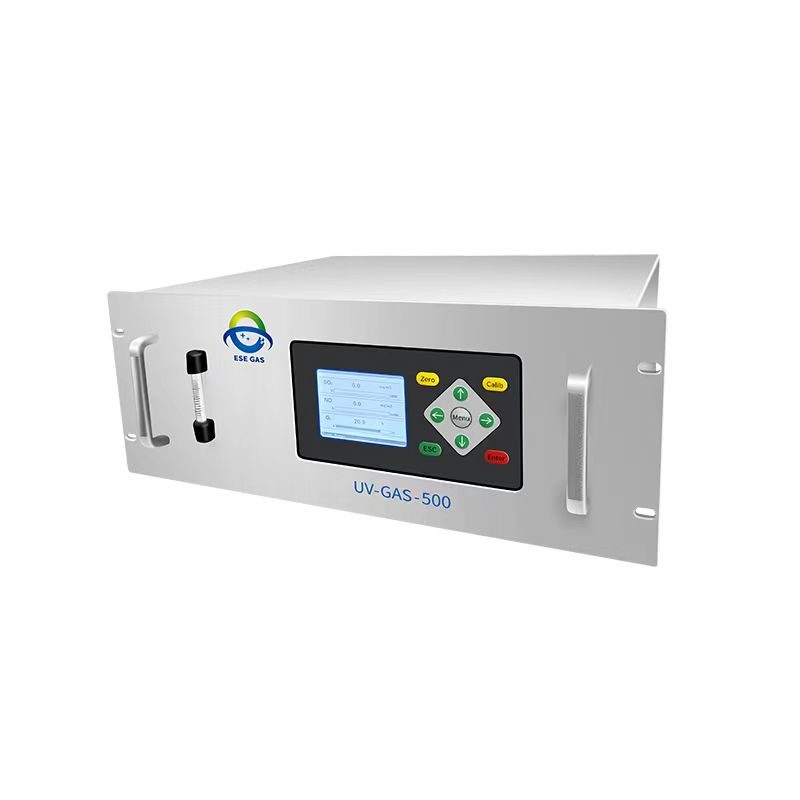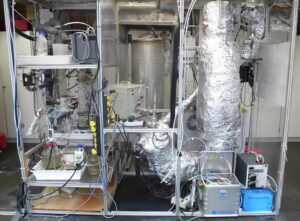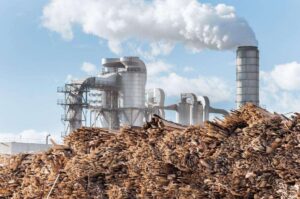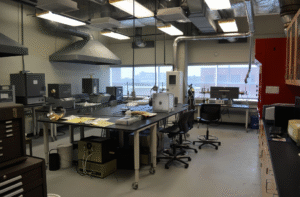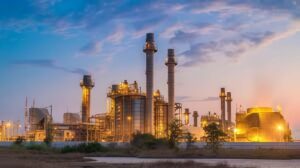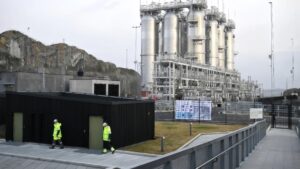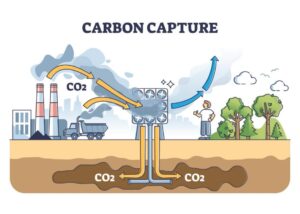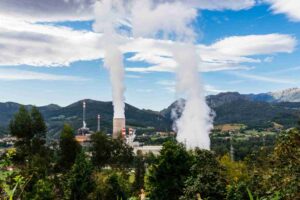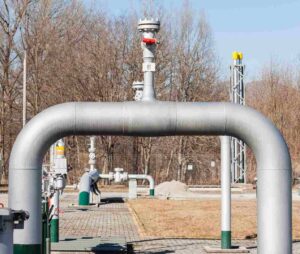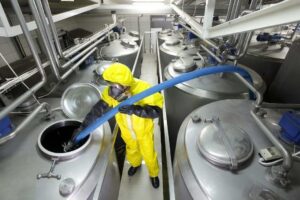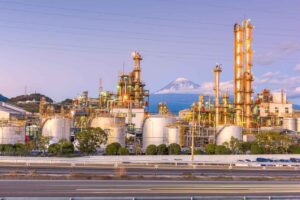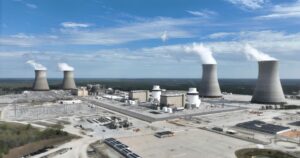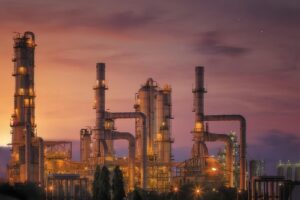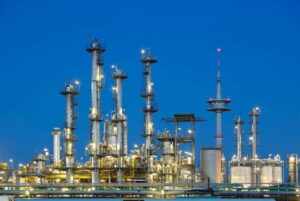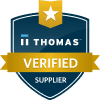Industrial sites and municipalities are under relentless pressure to prove compliance while actually lowering real-world NOx emissions. Yet many teams still fight with analyzers that drift, demand converter upkeep, or over-respond to wet, dusty flue gas. That means questionable data, avoidable reagent spend, and shaky audits. ESEGAS tackles those headaches with a UV-DOAS approach that directly measures NO and NO₂—no converter needed—delivering low detection limits, fast response, and robust performance in tough stacks.

ESEGAS’s NOx Gas Analyzer (UV-GAS-500) is a UV-DOAS + PLS spectroscopic instrument that directly measures NO and NO₂ to report NOx without a NO₂→NO converter. This design enables low detection limits, fast T₉₀ response, and resilience to particulates and moisture, making it well-suited to CEMS and process optimization across power, cement, steel, and waste-to-energy applications.
So it reduces maintenance and interference—but what’s inside the box, how do you interpret its performance, where does it shine, and how does it stack up against chemiluminescence or NDIR? Let’s unpack the essentials and then walk through real AQMS/CEMS case templates you can reuse.
What sensing principle does the ESEGAS NOx Gas Analyzer use?
Converter-based systems can add cost and uncertainty: more heated parts, more failure modes, and known biases when other nitrogen species are present. The cure is a NOx Analyzer that doesn’t need conversion.
ESEGAS employs UV Differential Optical Absorption Spectroscopy (UV-DOAS) with PLS (Partial Least Squares) chemometrics. A broadband UV source passes through a cell containing the sample gas; NO and NO₂ each have distinct UV absorption fingerprints. By fitting the measured spectrum with PLS, the analyzer quantifies each gas directly—so total NOx is obtained by summing the independently measured NO and NO₂ signals. Because the method is optical and wide-band, it is inherently selective and does not require an NO₂→NO converter, materially cutting maintenance and error sources. The design is explicitly specified for low detection limit, fast response, and minimal interference from particulate matter and moisture.
Context vs. chemiluminescence/NDIR: chemiluminescence (CLD) is highly sensitive but hinges on a converter (molybdenum or photolytic) for NO₂; cross-reactions are a known concern in some conditions. UV-DOAS avoids that converter step.
Which NOx Gas Analyzer performance attributes matter, and how should you read them?
Specs aren’t just catalog fillers; they decide whether your NOx Analyzer stands up in audits and whether your control loop trusts the number.
Focus on:
- Detection limit & linear range. ESEGAS notes UV-DOAS models with ranges from ~100 ppm up to 10,000 ppm, covering low- to high-emission stacks. Pair the range to your fuel, abatement, and expected transients. (esegas.com)
- Response time (T₉₀). Faster response improves SCR/SNCR tuning and alarm fidelity (shorter overshoot/undershoot).
- Selectivity & interference immunity. The UV-DOAS/PLS approach is designed to resist particulate and moisture effects that often plague extractive systems. (esegas.com)
- Stability/temperature drift. Lower drift stretches calibration intervals and lifts data availability. (esegas.com)
- Integration and maintainability. Confirm sample conditioning (heated line, filters), auto-zero/span options, and how diagnostics are surfaced to DCS/EMS—these drive lifecycle cost and uptime.
Where does NOx Gas Analyzer deliver the most value?
Limits keep tightening while loads, fuels, and moisture swing hour-to-hour—so compliance averages wobble and reagent bills creep up. If your stack gas is wet, dusty, or chemically complex, conventional converter-based systems add upkeep and uncertainty. A UV-DOAS NOx Analyzer that reads NO and NO₂ directly stabilizes the number you control to, cuts converter maintenance, and protects valid-hour availability.
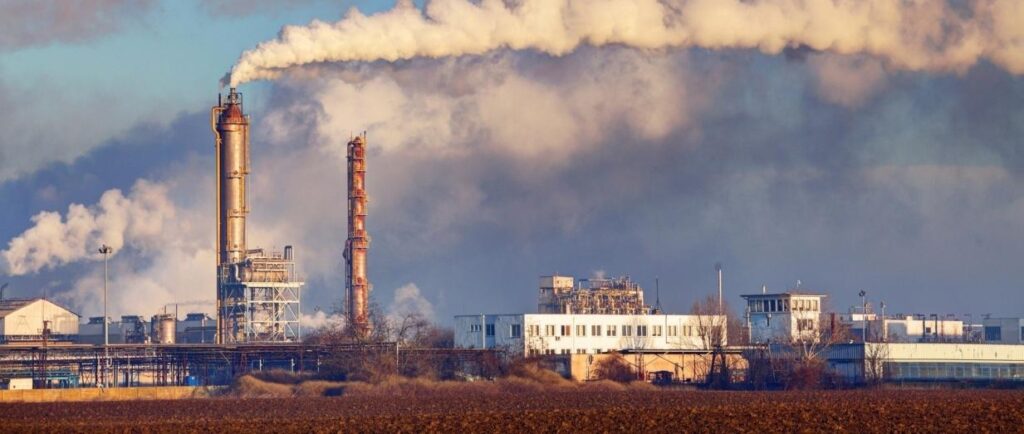
1) CEMS for stationary sources (power, boilers, cement, steel, waste-to-energy)
- Why it matters: Compliance hinges on valid data capture (availability), defensible accuracy, and fast recovery after upsets.
- Typical challenges: High moisture (gas/oil boilers, WtE), dust and temperature transients (cement, sinter), reactive nitrogen species that can bias converter methods.
- How the UV-DOAS NOx Analyzer helps:
- Direct NO/NO₂ means no NO₂→NO converter to heat, monitor, or periodically replace.
- Optical selectivity improves resilience to particulate and water vapor compared with many extractive schemes.
- Fast T₉₀ supports rolling-average integrity and speeds post-maintenance data validation.
- What to expect in practice:
- Higher valid-hour ratio (fewer invalid flags during wet/dusty episodes).
- Lower routine maintenance (fewer interventions around converters/heated parts).
- Cleaner audits (traceable NO/NO₂ channels with consistent drift behavior).
2) Process optimization & emissions control (SCR/SNCR, staged combustion, air–fuel tuning)
- Why it matters: You pay for every kilogram of ammonia or urea—and for every ppm of ammonia slip or NOx exceedance.
- Typical challenges: Slow or noisy feedback delays tuning; converter drift misleads dose control; rapid load swings.
- How the UV-DOAS NOx Analyzer helps:
- Faster, more stable NO/NO₂ signals enable tighter reagent trim in SCR/SNCR loops.
- Separate NO and NO₂ trends help diagnose catalyst performance and mixing quality.
- Direct measurement reduces “false richness/lean” corrections caused by converter bias.
- What to expect in practice:
- Lower reagent consumption at the same NOx setpoint.
- Reduced ammonia slip through tighter control.
- Fewer alarm excursions and quicker return to compliance after load changes.
3) AQMS (ambient, near-source, and fenceline monitoring)
- Why it matters: Urban and industrial airsheds often mix traffic and process plumes; traceable NO/NO₂ resolution improves source attribution and episode response.
- Typical challenges: High relative humidity, particulate spikes, and diurnal peaks; need for co-located meteorology and multi-pollutant context.
- How the UV-DOAS NOx Analyzer helps:
- Optical selectivity maintains data continuity in humid conditions.
- Separate NO vs. NO₂ channels sharpen diurnal pattern analysis (rush hour vs. industrial events).
- Stable baselines reduce re-span frequency and data gaps.
- What to expect in practice:
- Improved data capture during high-RH periods.
- Clearer diurnal and episodic profiles for planning and enforcement.
- Simpler QA/QC with consistent drift characteristics.
Industry snapshots (what it looks like on the ground)
| Scenario | Pain point | Configuration highlights | Business value |
| Gas/coal boiler CEMS | Wet flue gas causes invalid data; converter upkeep | Heated probe & line; UV-DOAS NOx Analyzer; auto zero/span; 4–20 mA + Modbus to DAQ | More valid hours, fewer callouts, steadier rolling averages |
| Waste-to-Energy | Dust + acid gases, SNCR slip variability | Pre-filter + heated sampling; direct NO/NO₂; dose control link | Reagent savings, slip reduction, fewer exceedance alarms |
| Cement kiln tail | High dust, hot transients, variable fuels | High-temp probe, staged filtration, UV-DOAS NOx Analyzer | Stable readings through dust phases; smoother kiln control |
| Steel sinter | Rapid load swings, complex matrix | Fast T₉₀ optical NO/NO₂; robust diagnostics | Faster recovery after upsets; reliable compliance data |
| Refinery/petrochem heater | Mixed hydrocarbons, wet stacks | Moisture-tolerant optics; drift-check routines | Less rework, consistent trends for burner tuning |
| AQMS urban site | RH spikes, traffic/industrial overlap | UV-DOAS NOx Analyzer + met sensors; periodic span checks | Higher data completeness; clearer attribution of peaks |
How does it compare with chemiluminescence or NDIR?
Choosing the wrong technology saddles you with constant converter maintenance—or, conversely, with an optical system mismatched to your matrix. The right NOx Analyzer depends on your gas mix and goals.
- UV-DOAS (ESEGAS): Direct, simultaneous NO and NO₂; no converter; robust to particulates/moisture; strong for compliance + process where converter bias is a concern. (esegas.com)
- Chemiluminescence (CLD): Excellent sensitivity; relies on molybdenum or photolytic converter for NO₂—known to diverge when reactive nitrogen species are present; more converter upkeep. (teledyne-api.com)
- NDIR: Cost-effective for broader gas lists but typically less selective for NO₂ and may need careful interference compensation.
Decision rule of thumb: If converter-related bias or maintenance risk is unacceptable, UV-DOAS is compelling; if your audit method mandates CLD at ultra-low ppb and matrix is controlled, CLD can be appropriate. Use NDIR when NO/NO₂ are secondary to a multi-gas balance with relaxed detection limits.
What makes or breaks NOx Gas Analyzer accuracy in sampling and installation?
Nine out of ten data problems trace back to the sampling chain—not the NOx Analyzer itself.
- Probe & line: Place the probe in a well-mixed location (per velocity/temperature traverse), keep lines heated above dew point to prevent NO₂ loss, and size filters for dust load.
- Conditioning: Control particulates and condensate without over-scrubbing your analyte; verify leak-tightness and consistent flow.
- Start-up & QA: Standardize warm-up, zero/span checks, and routine drift verification; log T₉₀ after maintenance.
- Data integration: Map analyzer status and ranges into the CEMS/DAQ so invalid data never pollutes compliance averages.
How do you use NOx data for compliance and real reductions?
“Can measure” isn’t “audit-proof.” If your NOx Analyzer data aren’t complete and traceable, you’ll still lose availability and credibility.
- Data integrity: Enforce time-stamped status codes (calibration, fault, maintenance) and retain raw/processed records for audits.
- CEMS linkage: Align averaging rules, calibration gas certificates, and span checks with your local protocols; keep analyzer alarms tied to DAQ validity flags.
- Control: Feed real-time NO/NO₂ into burner management and SCR/SNCR dosing to minimize ammonia slip and flue losses; quantify benefits in fuel/reagent savings and penalty avoidance.
What’s the ROI logic when selecting and scaling?
Capital is tight; your NOx Analyzer has to pay its way.
- TCO model: Sum capex + commissioning + sample-line heat + filters + calibration gas + routine labor + downtime cost.
- Savings levers: Eliminate converter maintenance, reduce false exceedances, shorten tuning cycles (response time), and cut reagent via tighter control.
- Decision gate: If converter upkeep or data invalidation is a chronic pain point, UV-DOAS usually clears the payback bar faster.
AQMS/CEMS case templates you can reuse
Stakeholders want proof. Structure your NOx Analyzer story with “challenge → configuration → outcome.”
- Urban AQMS station (traffic + industrial mix)
- Challenge: Morning NO₂ peaks confounded by humidity and PM; periodic data loss in wet weather.
- Configuration: UV-DOAS NOx Analyzer with direct NO/NO₂; co-located met sensors and SO₂/CO; heated sample line; automated zero/span.
- Outcome: Improved data capture in high-RH conditions; tighter NO/NO₂ diurnal profiles; clearer attribution of rush-hour peaks vs. nearby boiler upsets.
- Waste-to-Energy CEMS (high moisture, acid gases, dust)
- Challenge: Converter maintenance on legacy CLD causing downtime; ammonia slip variability after SNCR.
- Configuration: Heated probe and line, pre-filter for dust, UV-DOAS NOx Analyzer for direct NO/NO₂; analyzer status mapped to DAQ validity.
- Outcome: Reduced maintenance interventions; faster T₉₀ improves SNCR trimming; fewer invalid data periods and exceedance alarms.
- Cement kiln tail-end CEMS (high dust, hot, fluctuating load)
- Challenge: Large transients and particulate spikes degrading readings and increasing calibration frequency.
- Configuration: High-temp probe, staged filtration, UV-DOAS NOx Analyzer with routine drift checks; linked to preheater draft control.
- Outcome: Higher valid-hour ratio through dusty phases; smoother kiln control with measurable NOx reduction and reagent savings.
Conclusion
ESEGAS’s UV-DOAS + PLS architecture directly measures NO and NO₂ to report NOx without converters, delivering low detection limits, fast response, and resilience to particulates and moisture. In compliance (CEMS) and ambient (AQMS) contexts alike, that combination translates to fewer invalid hours, less maintenance, and tighter process control. If you’re scoping a deployment, start with a sampling audit, confirm ranges against expected spikes, and specify QA/validity signaling to your DAQ from day one—then pilot on your highest-pain line and scale from there.




